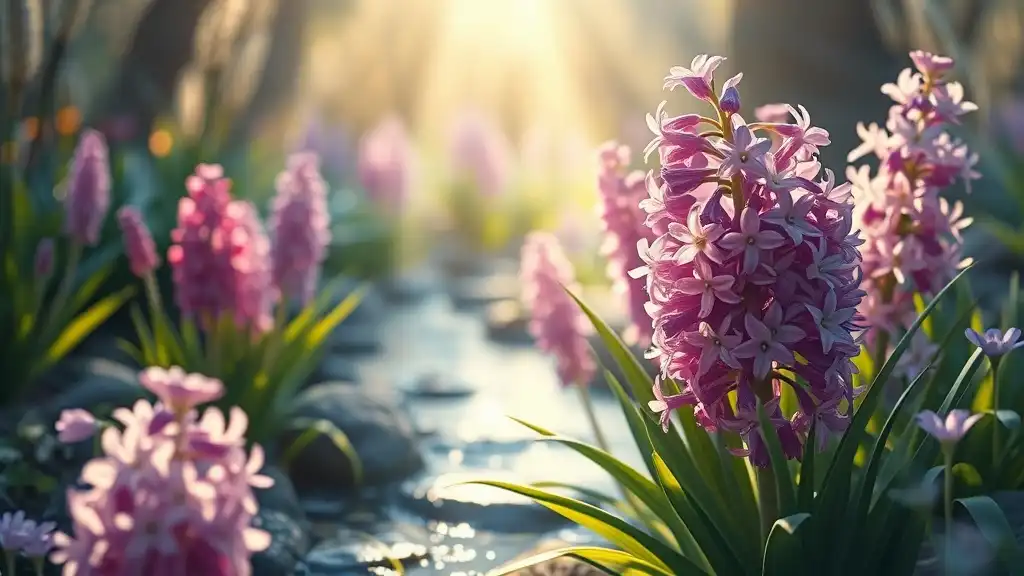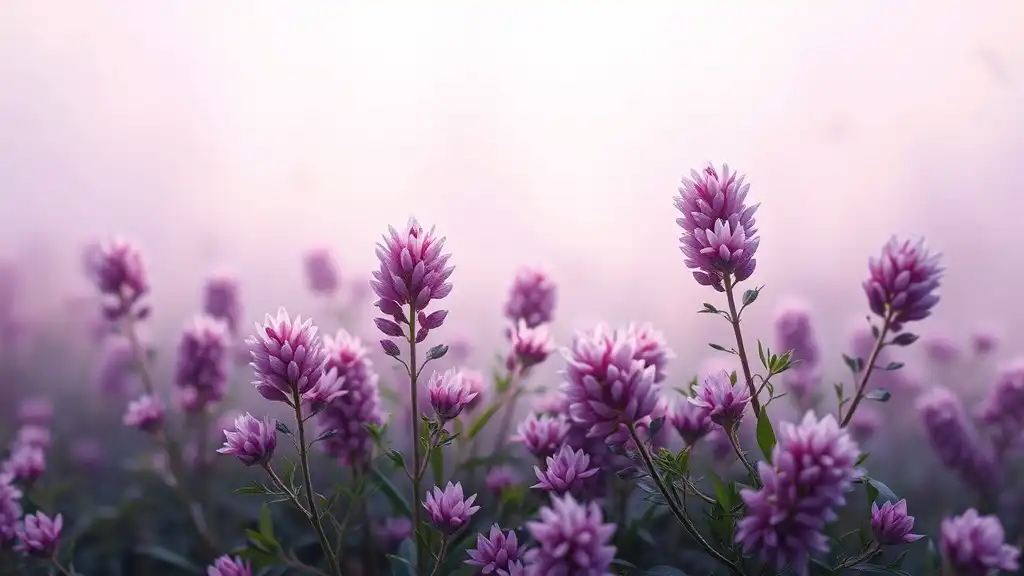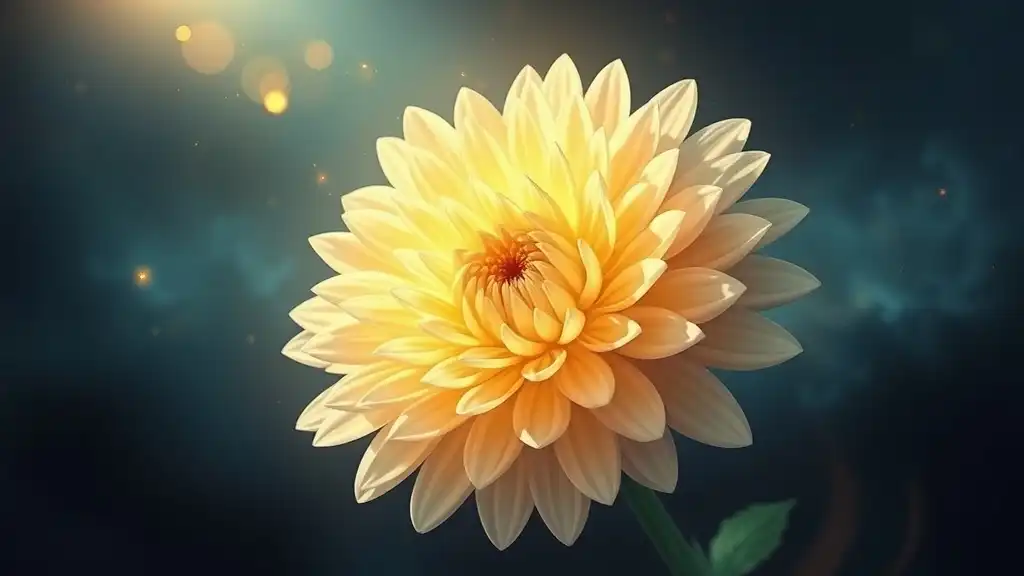Hyacinth, with its vibrant blossoms and rich symbolism, has captivated hearts and minds throughout history. Flowers have always served as powerful symbols in spiritual practices and traditions, and hyacinth is no exception. This article delves into the spiritual meaning of hyacinth, exploring its symbolism, historical significance, and practical applications in your spiritual journey.
The Hyacinth Flower: An Overview
Hyacinth is a perennial flowering plant known for its dense clusters of bell-shaped blooms and fragrant scent. Originating from the Eastern Mediterranean region, this flower has been cultivated for centuries, admired not just for its beauty but also for its rich symbolism.
The vibrant colors of hyacinth, ranging from deep purples and blues to playful pinks and whites, contribute to its significance as a symbol of rebirth and renewal. Historically, the hyacinth was associated with spring, a season that represents new beginnings and fresh starts.

Spiritual Symbolism of Hyacinth
Connection to Purity and Sincerity
Hyacinth embodies purity and sincerity, making it a potent symbol in various spiritual contexts. In many cultures, this flower represents true affection, fidelity, and the purity of the heart. The essence of hyacinth encourages individuals to cultivate sincerity in their relationships and personal endeavors, acting as a gentle reminder to embrace honesty and transparency.
The Role of Hyacinth in Spiritual Practices
Hyacinth is often involved in rituals and ceremonies that celebrate love and devotion. Its presence in spiritual practices elevates the energy of a space and fosters deeper connections among participants. When meditating, the scent of hyacinth can help in grounding and centering oneself, allowing for a more profound connection to one's inner self. The act of focusing on the flower during meditation aids individuals in embracing the qualities of purity and sincerity in their lives.

Hyacinth in Mythology and Folklore
Ancient Greek Myths
One of the most poignant stories surrounding hyacinth comes from Greek mythology. The god Apollo, struck with grief over the untimely death of his beloved friend Hyacinthus, transformed his blood into the beautiful flower that bears his name. This narrative not only captures the themes of love and loss but also highlights the flower's connection to eternity. The act of remembrance through the blooming hyacinth symbolizes that love transcends even death, making it an emblem of everlasting affection.
Hyacinth in Various Cultural Folklore
In different cultural narratives, hyacinth carries unique meanings. For instance, many Native American tribes view the hyacinth as a representation of friendship and community. It is often used in celebrations that honor connections between people. In Asian cultures, the flower is believed to house protective spirits, further grounding its significance within spirituality and cultural heritage.

The Healing Properties of Hyacinth
Emotional Healing
Hyacinth is said to possess various healing properties, particularly in emotional contexts. The gentle fragrance of the flower can promote feelings of tranquility and peace. Engaging with hyacinth—whether by surrounding oneself with the bloom, utilizing its scent in aromatherapy, or incorporating it into meditation—can help alleviate stress and invite emotional balance.
Physical Healing
Traditionally, hyacinth has been utilized in herbal medicine. Some cultures have harnessed its properties to address physical ailments, believing it can help with respiratory issues and promote general wellness. The flowers can be brewed into teas or used in infusions, inviting nourishment for both the body and spirit.

How to Incorporate Hyacinth into Your Spiritual Practice
Using Hyacinth in Meditation and Visualization
To integrate hyacinth into your meditation practice, consider creating a sacred space filled with its scent. Focus on the flower’s beauty and let it inspire your thoughts on purity and sincerity. Visualize the petals unfolding, symbolizing the layers of your being opening up to the light of awareness. Allow this visualization to guide you toward a deeper understanding of your emotions and relationships.
Creating Hyacinth-Inspired Altars and Spaces
Consider crafting an altar that incorporates hyacinth flowers or images of them. Surrounding yourself with this symbol can amplify your intention to embrace sincerity and purity in your life. Use this space for reflection, prayer, or quiet contemplation, inviting the energies of the hyacinth into your spiritual practice.

The Seasonal Significance of Hyacinth
Spring and New Beginnings
Hyacinth is deeply intertwined with the energy of spring, serving as a potent symbol of resurrection and new beginnings. As the days lengthen and temperatures rise, the emergence of hyacinth blooms offers a tangible reminder of the cyclical nature of life. Use this time to reflect on your own renewals, setting intentions for growth and development as you embrace the vibrant energy that the hyacinth represents.

Conclusion
The spiritual meaning of hyacinth is rich and multi-layered, encompassing themes of purity, sincerity, and renewal. By inviting this beautiful flower into your life, whether through meditation, ritual, or simply enjoying its presence, you may deepen your connection to your spiritual path while fostering more meaningful relationships with yourself and others. Explore the essence of hyacinth and allow its wisdom to guide you on your journey of self-discovery.



















